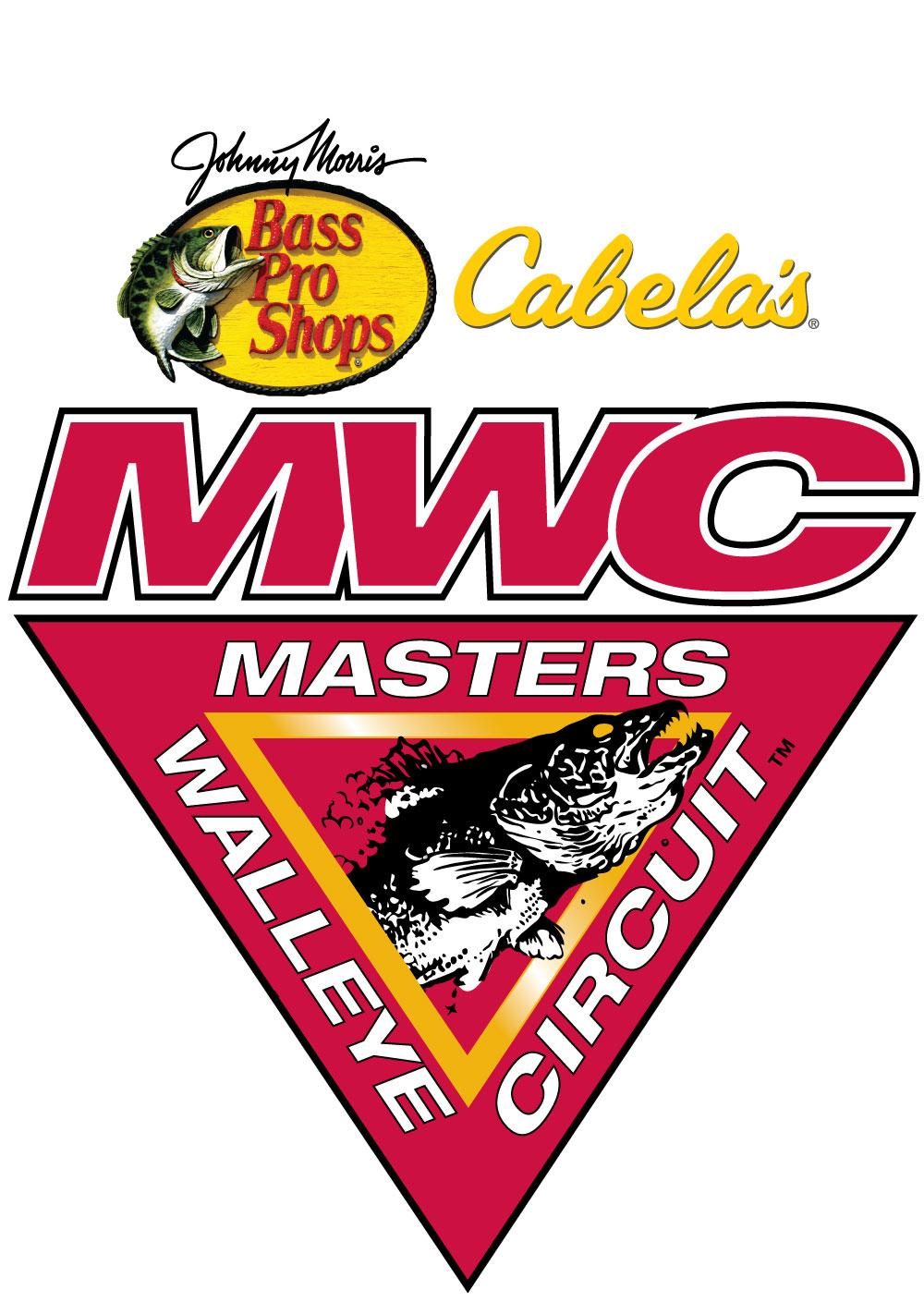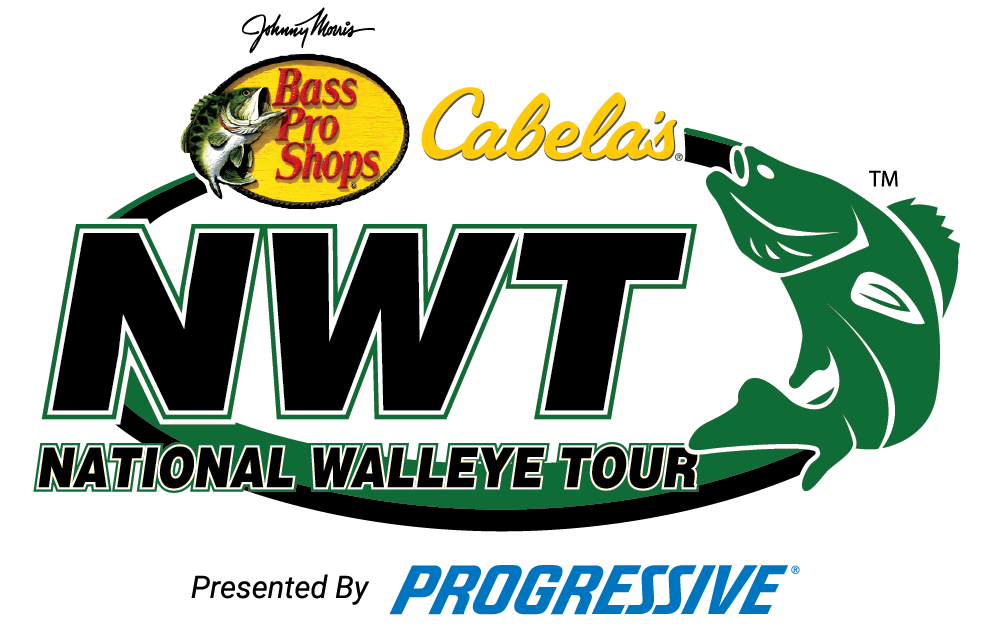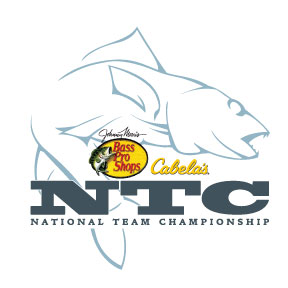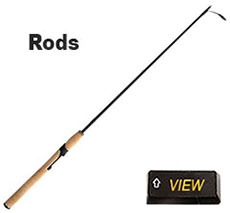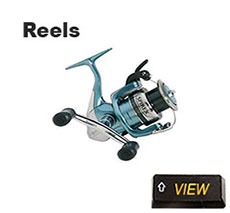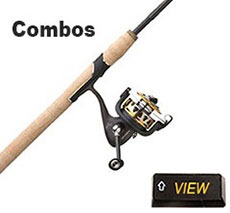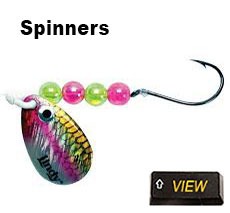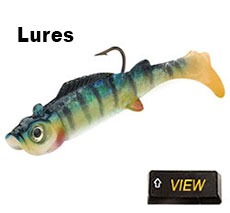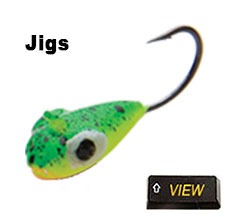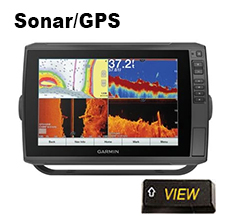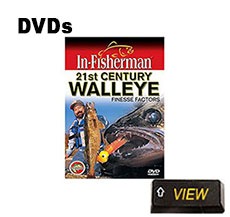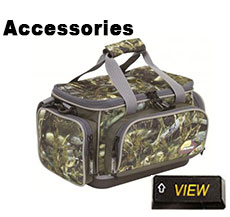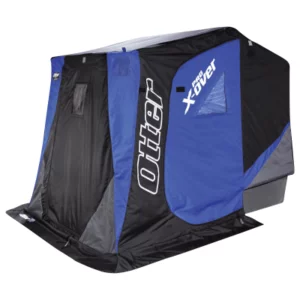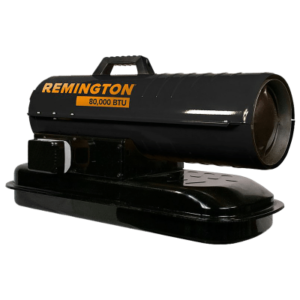Masters Walleye Circuit 2025
March 21-22 – Illinois River, Spring Valley, Illinois
April 11-12 – Lake Erie, Port Clinton, Ohio
May 2-3 – Lake Petenwell, Rome, Wisconsin
May 30-31 – Lake Oahe, Mobridge, South Dakota
July 18-19 – Bay De Noc, Gladstone, Michigan
September 12-13 – Cass Lake, Cass Lake, Minnesota
National Walleye Tour Schedule 2025
April 24th-25th – Lake Sharpe, Pierre, SD
May 22nd-23rd – Mississippi River, La Crosse, WI
July 10th-11th – Lake Huron, Alpena, MI
August 7th-8th – Lake Erie, Dunkirk, NY
CHAMPIONSHIP – Sept. 4-6 – Bay of Green Bay, Marienette, WI


Take a look at all the walleye baits and tackle items available. You’ll find walleye rods, reels and combinations and plenty of lures, jigs, spinners, grubs and harnesses. We also have hooks, snells, sinkers, as well as books and DVDs. All are from quality merchants offering well-known brands like Loomis, Abu Garcia, Shimano, Daiwa, Northland and Lindy.
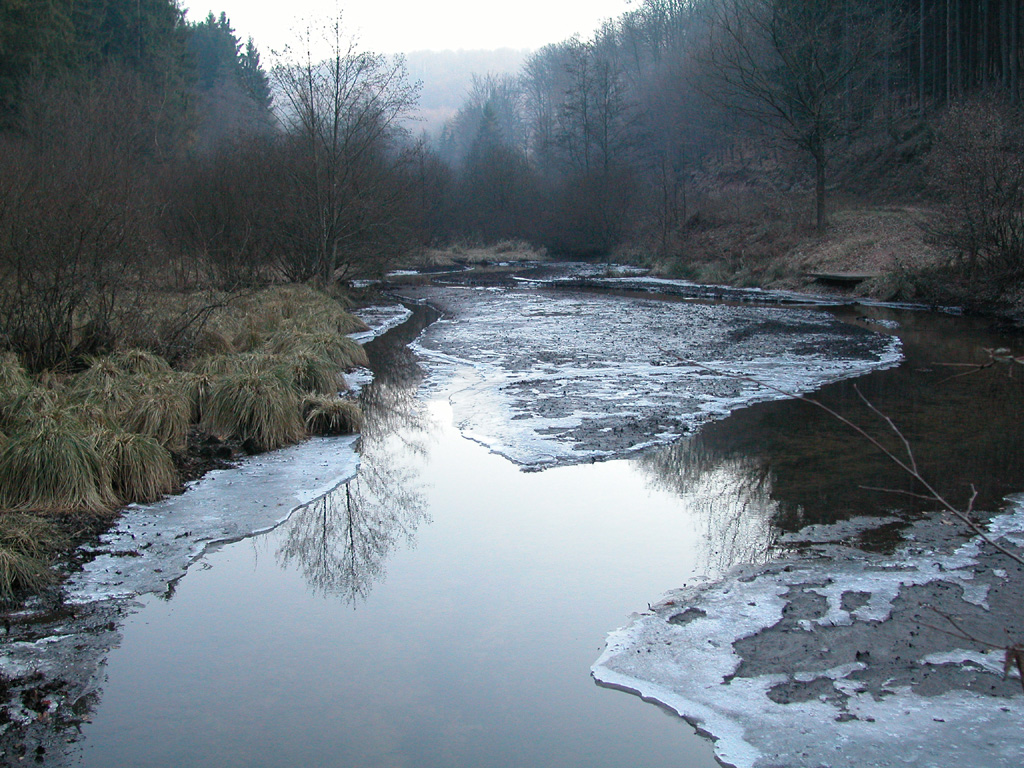
Spring Walleye!
The ice will be out soon enough and it’s time to think about early Spring walleye, break out the gear and review the best strategies for bringing them into the boat. Spring is a varied season that can be broken into three distinct phases.
Pre-Spawn
Once the water temperature has reached the 38-44°F range, the pre spawn begins as walleyes migrate to their spawning grounds. They will stage themselves on or near these grounds until the spawn, which peaks at about 42-50°F. Walleye spawning grounds are typically shallow, rocky areas in water that moves fast enough to keep the eggs well oxygenated and free of silt.
River walleyes will spawn near dams and other man made or natural obstructions that impede their travel any farther upstream. They also like areas where tributaries feed into the main river. Because shallower river waters warm up quicker, these walleyes usually spawn earlier than their lake brethren.
Lake walleyes are either stream or lake spawners. The stream spawners will stage around structures at harbor mouths and river inlets until it’s time to move up the tributaries that feed into the lake. Lake spawners will make for the shallows when it’s time. They, too, prefer gravel beds, but will settle for hard sand bottoms if habitat dictates. Nature likes to spread its bets when it comes to species survival, so you’ll generally find both types sharing the same waters.
During pre-spawn, the males will move into shallow water earlier while the females will continue to hold in deeper spots until spawn. The water will be cold, so they’re not going to be particularly aggressive feeders. But, if you fish them slow, with big bait, you stand a good chance at taking two or three. Most of the usual bait fish have yet to hatch, so walleyes are looking to older, larger fish that survived the winter. Try large minnows on a Lindy rig and troll as slow as possible to give those lethargic ‘eyes a chance to think and react. When they do hit the bait, let them have some line and time before setting the hook.
Spawn
Walleyes will spawn at depths ranging anywhere from 1 to 20 feet, but between 3 and 10 feet is usually your best bet. You’ll find them close to shore above those gravel or rocky bottoms where there is current sufficient enough to provide the best environment yet not sweep the eggs away. Minnow plugs are often the way to go at this time, but live minnows are a great alternative when the plugs aren’t working.
The map shows when you can expect the spawn to begin, give or take a week or two, depending on the weather. It’s also important to remember that in most northern states and Canada the walleye fishing season is closed during this period to stop poaching when spawning walleye are most vulnerable. This practice is still debatable in some circles, but the prevailing thought is that limiting the season helps maintain fish population levels. In many southern and western states, however, the season is year round. So, check your local fishing regulations to see when you can hone in on early season walleyes.
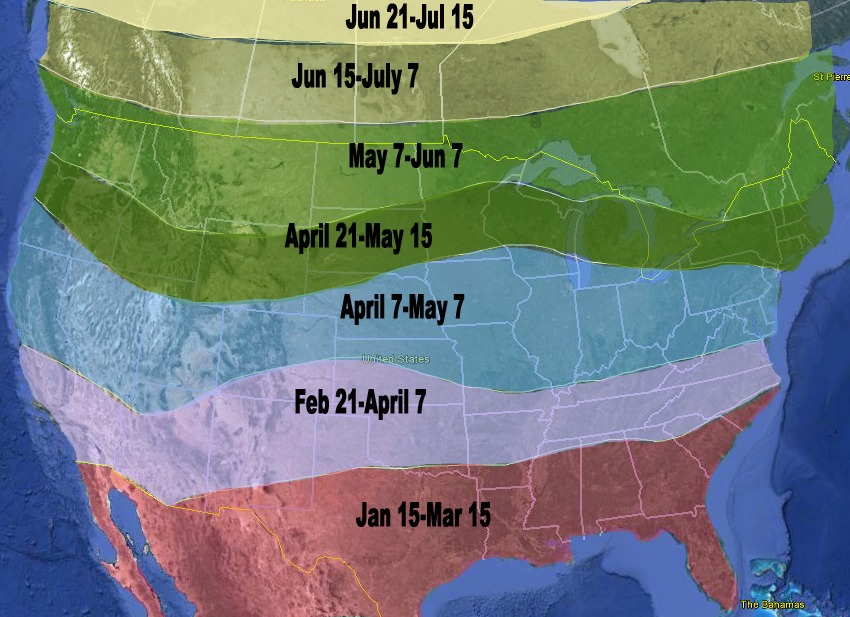
Post-Spawn
Once the spawn has concluded, walleye like to take a breather and recuperate. This can last from a few days to a couple of weeks – not a great time to be landing your limit. They aren’t particularly hungry and between rests, they’re beginning to transition to their summer spots. But, those deeper, summer locations won’t have any bait fish yet, so you’re still likely to find walleyes close to shore where foraging is better. Look for them just off from the spawning areas around the first drop-off. Trolling spinner-bouncer combinations or crankbaits can be very effective, but take it slow. Somewhere in the 1.5 mph range is more likely to attract a walleye still trying to shake off its post spawn lethargy.
Then again, sometimes nothing beats live bait, especially in the spring. Night crawlers and minnows are often a good choice. If the fish seem particularly active, by all means go with the hard baits. But, if their bites are tentative, tipping a jig with a minnow or crawler can help pique ol’ marble eye’s interest to go for the easy meal.
Looking to land that 10-pounder? Night fishing during this season offers a great opportunity to catch a real trophy. While cooler spring days keep the males close to shore, it’s near and after dark that the large females move in from their deeper holding spots to feed in the shallows.
And, by the way, if you don’t have a boat or aren’t ready to haul it out yet, bank fishing or wading in the shallows can be very productive this time of year. Walleyes will be close to shore where the water is warmer and bait fish begin to proliferate. Like a great example? Check out my nephew’s dusk catch.
Spring may be the most challenging time of year to catch walleyes, but it’s also the most rewarding. There’s nothing more satisfying than beating the odds and if you do your homework and experiment a bit, you’ll get your bragging rights.
Your Walleye Weather!
Use Menu at Lower Left for Temperature, Wind Speed, etc. Use Mouse Wheel to Zoom. Hold Left Mouse Button to Move Map Location.
Walleye News!
- Midwest Walleye Challenge Returns for Second Year - Chadrad
- How do wildlife officials count the fish in Minnesota's lakes? - CBS Minnesota
- Anglers angry over Maumee parking restrictions - WTVG
- Fishing for answers: Maumee criticized for walleye camping, parking policies - Toledo Blade
- Walleye, white bass spawns close at hand - Northwest Arkansas Democrat-Gazette
- Walleye, white bass spawns close at hand - Arkansas Online
- Fishing and Hunting License Violations Reported - Ingstad Media
- Eyeing Great Lakes walleye - Ontario OUT of Doors
- 14-pound walleye caught on Clinch River to be used for breeding - WJHL-TV News Channel 11
- Walleye time comes on area rivers - Chicago Sun-Times
Best Spring Walleye Baits
 The Rapala Jigging Rap has been around for nearly 50 years and represents the gold standard among anglers. Its sleek, minnow profile and crazy circular swimming motion mimics a wounded baitfish that can ignite strikes from suspended walleyes. The bill at the back-end allows for the rap’s movement on both the rise and fall. Rapala also offers jigging raps with a UV finish, great in low light or stained water. Depending on your line weight and water conditions, you can have a lot of success with sizes #5, #7, or #9.
The Rapala Jigging Rap has been around for nearly 50 years and represents the gold standard among anglers. Its sleek, minnow profile and crazy circular swimming motion mimics a wounded baitfish that can ignite strikes from suspended walleyes. The bill at the back-end allows for the rap’s movement on both the rise and fall. Rapala also offers jigging raps with a UV finish, great in low light or stained water. Depending on your line weight and water conditions, you can have a lot of success with sizes #5, #7, or #9.
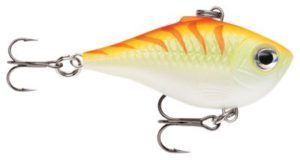 With its lipless, deep belly profile, the Rapala Ultra Light Rippin’ Rap crankbait is designed to dive and rip with the best of them. Flat, skinny sides allow the Rapala Ultra Light Rippin’ Rap to flutter on the drop with a hard-vibrating action that’s accented with a loud, BB rattle system. Other features include textured scales and gills with deep-set 3D holographic eyes. Adding to this crankbait’s deadly disposition are fast-piercing VMC® black nickel hooks.
With its lipless, deep belly profile, the Rapala Ultra Light Rippin’ Rap crankbait is designed to dive and rip with the best of them. Flat, skinny sides allow the Rapala Ultra Light Rippin’ Rap to flutter on the drop with a hard-vibrating action that’s accented with a loud, BB rattle system. Other features include textured scales and gills with deep-set 3D holographic eyes. Adding to this crankbait’s deadly disposition are fast-piercing VMC® black nickel hooks.
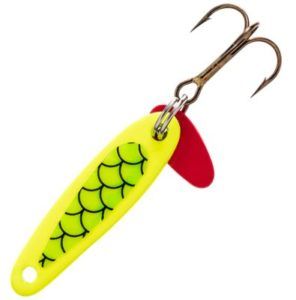 Used in Sweden for more than 100 years, the Bay de Noc Swedish Pimple jigging spoon delivers exceptional results on saltwater and freshwater fish. A tried-and-true ice fishing legend for decades, and the first to incorporate a flicker blade as standard equipment; just use a sharp vertical jig motion to execute an erratic injured baitfish action. Flashy and responsive, the Pimple is effective whether fished plain or tipped with bait.
Used in Sweden for more than 100 years, the Bay de Noc Swedish Pimple jigging spoon delivers exceptional results on saltwater and freshwater fish. A tried-and-true ice fishing legend for decades, and the first to incorporate a flicker blade as standard equipment; just use a sharp vertical jig motion to execute an erratic injured baitfish action. Flashy and responsive, the Pimple is effective whether fished plain or tipped with bait.

Made of top-quality, 100% pure tungsten, the compact Custom Jigs & Spins Chekai Tungsten Jig offers superb control for enticing finicky panfish in any ice fishing setting. Its large eyes, concave face, and smooth rounded sides allow you to perform smooth, subtle movements that fool wary fish.
- 100% pure tungsten head
- Attracts all species of panfish
- Affords precise jigging control
Spring Walleye Fishing Videos
Great Spring Walleye Lures
Rapala Original Floating Minnow
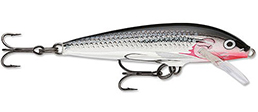
The Rapala Original Floating Minnow is the lure that started it all and is still one of the most popularures around. Whether twitched on the top as a surface bait, retrieved as a shallow runner, weighted with a split-shot for medium-depth swimming.
Bass Pro Shops XPS Walleye Jigs
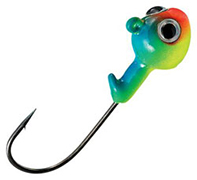
Endorsed by top walleye pros, theses jigs have a unique flat-footed design that keeps your bait in a natural ”feeding” position, just out of bottom debris. Great for vertical jigging in current. Upsized wide-gap premium hook; sharp, vivid colors. 6 pack.
Rapala Shad Rap Hardbait
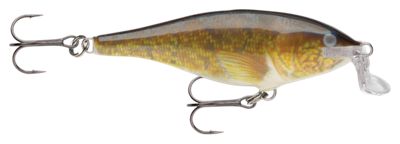
Balsa wood construction under incredible finishes makes the Rapala Shad Rap the lure big fish find irresistible. Built tough with hard-divingips and sharp treble hooks, theseegendaryures have the power to survive even the toughest fights.
Smithwick Walleye Deep Floating Rattlin' Rogue
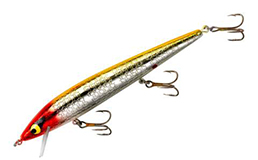
When you need to get deep, reach for a Smithwick Walleye Deep Floating Rattlin’ Rogue. This proven minnowbait with the extended divinglip floats at rest and digs down quickly when on the move. Equipped withoud fish-attracting rattles
Rapala Deep Down Husky Jerk
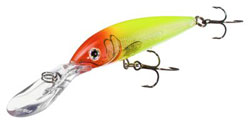
A natural for walleye, the Rapala® Down Deep Husky Jerk is designed to reach depths approaching 20′ on the troll and more than 10′ on the cast. Choose from painted, silver-plated finishes or the hot glass patterns with a transparent body and holographic foil spine that reflects light in all directions. Complete with premium VMC® black nickel treble hooks.


